As Australia’s reservoirs and catchments form a crust and the plastic used to transport bottled drinking supplies proliferates in the environment faster than bubbles in a bath … an Arizona-based company is using solar energy to process water from the troposphere — a constantly renewing airborne reservoir — and provide perfect drinking water at a tap close to people’s parched lips. Glass optional.
Cody Friesen, Associate Professor in materials science at Arizona State University, and founder and CEO of Zero Mass Water says the company’s Source Hydropanel, launched in 2017 with the ability to produce three to five litres of water per day, is the embodiment of Renewables 2.0.
At the CES consumer-technology fest in Los Angeles this month Source, which has been on a continuous path of efficiency gains since it was launched in 2017, was demonstrated in its most compact form yet — the new Rexi panel is half the size of the Source Hydropanel, yet boasts the same production capacity, and is designed to be integrated with and powered by rooftop solar installations.
“The concept is around the fact that a lot of our rooftop customers already have solar PV and we see an opportunity …” Friesen told pv magazine.
Novel water source enters the ARENA
The Australian Renewable Energy Agency (ARENA), saw the potential of Zero Mass Water technology to provide Australian homes, institutions and communities with water independence in February 2018.
Back then, it launched the $420,000 Source Hydropanel Demonstration Project, which has supported installation of 150 water-generating panels “across a variety of [Australian] geographies”, says ARENA’S online project page, to demonstrate performance of the technology in a range of environmental conditions.
The project is due for completion, together with associated reports and knowledge sharing, at the end of February 2020.
“The commercial trial of Zero Mass Water’s Source Hydropanels across 27 sites aims to reduce the need for plastic bottles and transportation through localised water production,” an ARENA spokesperson told pv magazine.
The spokesperson added, “The list of sites is diverse, including farms, local government councils, a school, remote island eco-resorts, commercial premises such as cafes, residential homes, a community hall and Indigenous communities.”
Friesen says that although it had installed some Source Hydropanels in Australia prior to the beginning of the ARENA trial, “ARENA was fundamental to us being able to quickly create a statistically significant number of pilot sites.”
A cascade of benefits
Three Blue Ducks restaurant and farm at Byron Bay was an early adopter of Zero Mass Water’s technology: it first installed a 10-panel array to produce water for its restaurant, and subsequently used sales of that drinking water to help fund the donation of another 10 Source Hydropanels to the primary school in the water-stressed town of Murrurundi, in New South Wales’ Upper Hunter Valley.
The school principal, Rebecca Hopkins, told ABC New England in early 2019 that due to severe water restrictions in the district, some local families had had to spend $1,500 over the previous year on bottled water, and that the school had also had no choice but to allocate funds to buy bottled water for staff and students.
With the Source Hydropanel array capable of producing up to 18,000 litres of drinking water a year, the school has been able to open free supply to members of the Murrurundi community, and to redirect its own funds towards education.
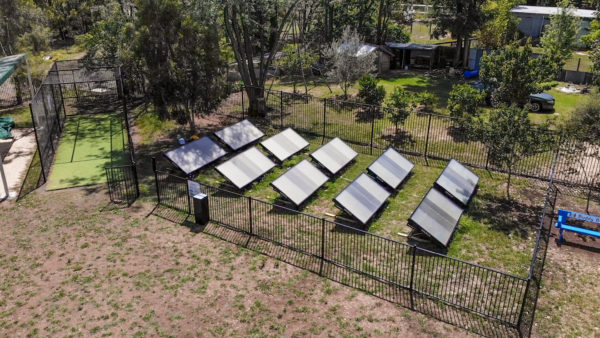
Photo: Zero Mass Water
Australia’s future looks dry
Last week, a study by University of New South Wales engineers forecast that the frequency of water restrictions that curtail Australians’ access to water will treble by the end of this century as climate change reduces inflows to catchment areas.
Higher temperatures, explains study co-author Professor Ashish Sharma, “are drying out the soils faster than before; so now when it rains a lot of the water that would have previously ended up in the dams is being absorbed into the parched soil,” which means rain and flood events are delivering less water to natural reservoirs.
“Water restrictions will not be able to sustain the dams on their own,” Sharma said in a statement accompanying release of the study, “we need to approach this from many directions”.
Renewables 2.0 as envisaged by Friesen may provide one such avenue.
Putting a plug in water-related energy expenditure
Although the cost of individual solar-powered water-from-air systems remains relatively high, at around $3,000 for a single self-contained Source Hydropanel, production within metres of the tap disintermediates drinking water supply from the cost and energy expended in water capture, water treatment (think not only purification, but increasingly desalination), water pumping, water containment (plastic and glass bottles of every size), bottled-water transport, and bottle recycling.
While renewable energy development has necessarily been focused on electricity production, only some 20% of global energy consumption is in the form of electricity, “the rest is in transportation, the food we eat, embedded energy in the stuff we buy and embedded energy in the water we drink,” says Friesen.
When he was investigating future transformative technologies, “The question became which of those would be able to both be parallel to Renewables 1.0 and dramatically lift people up?”
Friesen and his team decided on drinking water as the most urgent pressure point, and their grail became “to do for water what solar did for electricity”.
A little PV goes a long, thirst-quenching way
After some years of intense development, with the input of specialists from numerous fields including materials scientists, chemical engineers and computational fluid dynamicists, and funding from investors such as Bill Gates’ Breakthrough Energy Ventures group and 3×5 Partners, the Zero Mass Water solution is elegant — both simple, in that it takes advantage of the general abundance of water in air, and cutting edge in its combination of technologies.
Each Source Hydropanel utilises about 100 watts of monocrystalline PV to power several of the unit’s processes. A solar-powered fan drives air through a super-absorbant, hygroscopic material which collects water at 20,000 times the concentration of vapour in the air. Solar energy is used to heat the material which creates condensation and the pure water is gathered in a 30-litre reservoir. Minerals are automatically added to improve drinkability and inbuilt ozone treatment keeps water in the reservoir clean. Solar energy then pumps the water to a household tap or refrigerator cooling reservoir.
Friesen believes the evolution of Zero Mass Water technology can outpace the incredible trajectory taken by solar technology over the decades, because of the ability to analyse data gathered from installations all over the world.
Each Source Hydropanel contains a solar-powered microprocessor similar to that in a smartphone. “It’s basically solving an eight-dimensional problem to produce the maximum amount of water given conditions at every second of the day,” says Friesen.
The secret cordial: a dash of machine learning …
“And then every single panel across the globe — we’re now in more than 35 countries — communicates up to the cloud and back to our network operating centre so that we are able to take all of that data and continually, through a machine-learning approach, improve and advance the technology.”
Friesen believes that efficiency improvements and scaling up of production in response to demand will reduce the cost of independent water production such that it becomes economical to use Zero Mass Water for purposes beyond drinking water.
Rexi is a step in that evolution of the Source Hydropanel, and at CES, Zero Mass Water also launched the concept of Water Purchase Agreements — the equivalent of Power Purchase Agreements which have helped to unlock scale in the solar industry.
That is, Zero Mass Water will install large arrays of Source Hydropanels, dubbed Source Fields, at schools or hospitals, or central to communities; and sell its water on a contracted basis thereby freeing those communities of the capital expenditure involved in generating renewable water.
“We’re doing a bunch of things in Australia with that model,” says Friesen. “On 0.4 hectares of land we’re able to produce 1.2 to 1.5 million litres a year — that’s like a really good artesian well.”
Including the 27 ARENA-supported sites, Zero Mass Water installations now supply 50 locations of varying sizes in Australia with drinking water independent of rainfall, water tables, carbon-intense energy, pipes and plastic.
This expression of Renewables 2.0, says Friesen is “a really beautiful coalescence of the concept that the sun can provide a lot in the way of resources for humanity”.
This content is protected by copyright and may not be reused. If you want to cooperate with us and would like to reuse some of our content, please contact: editors@pv-magazine.com.
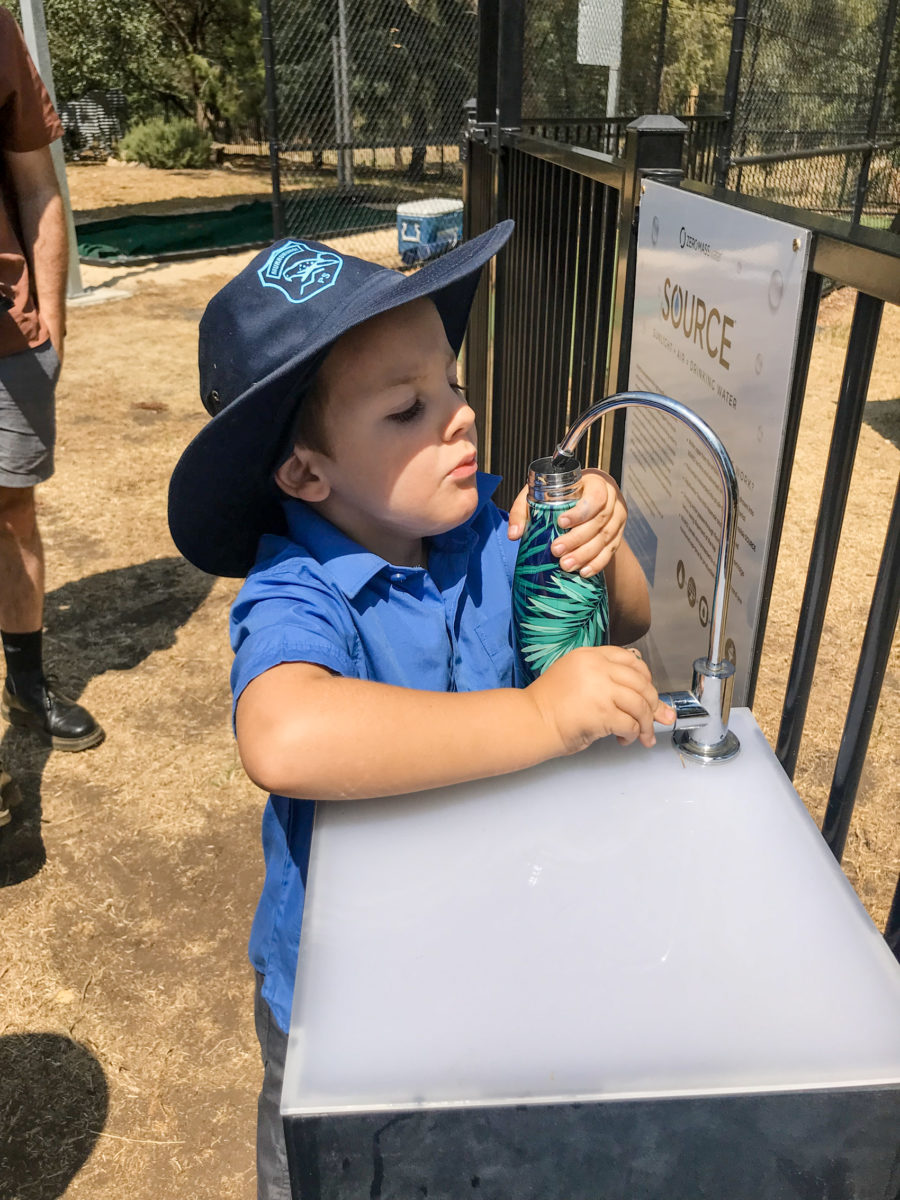



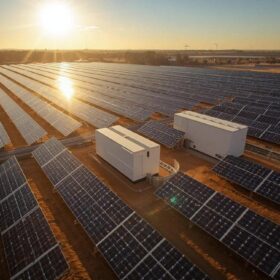
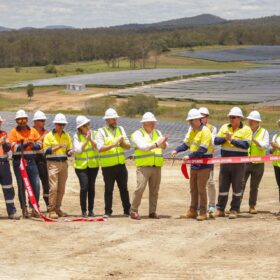
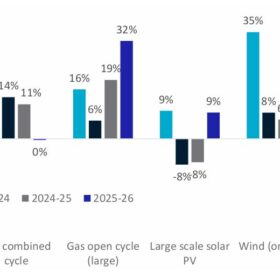

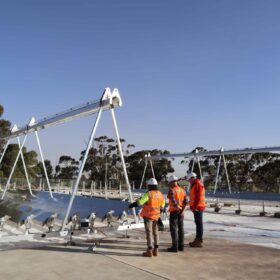
OMG people Physics, people its called Physics. This is nothing more than a glorified dehumidifier running at an abysmal efficiency.
Each panel costs $2000 and produces an average of two to five liters of water per day, Friesen said. A two-panel array costs $4500: $2000 per panel, plus a $500 installation fee.
See this video https://www.youtube.com/watch?v=vc7WqVMCABg